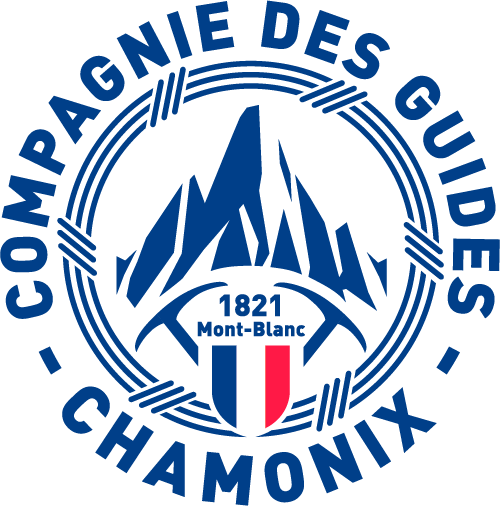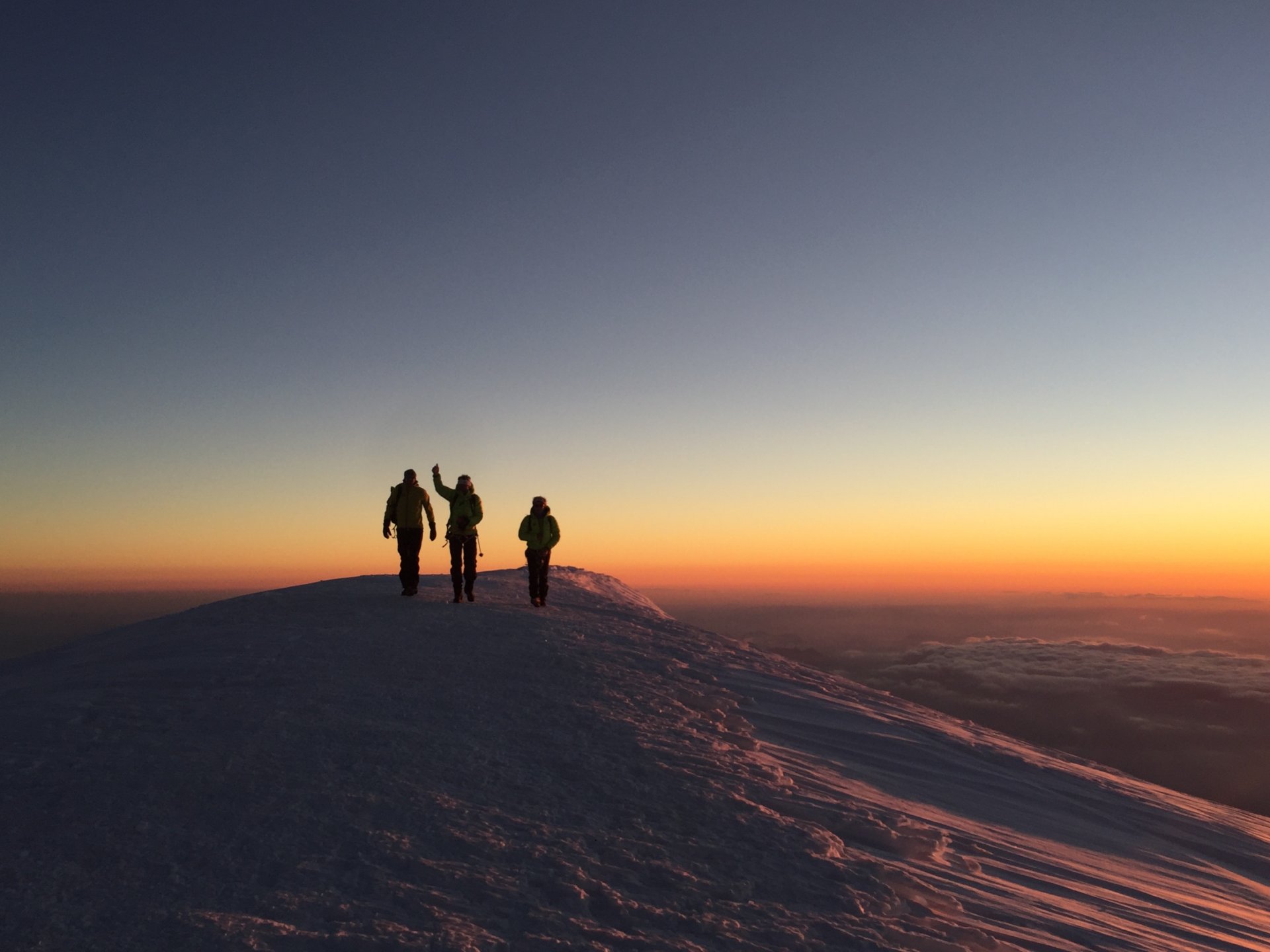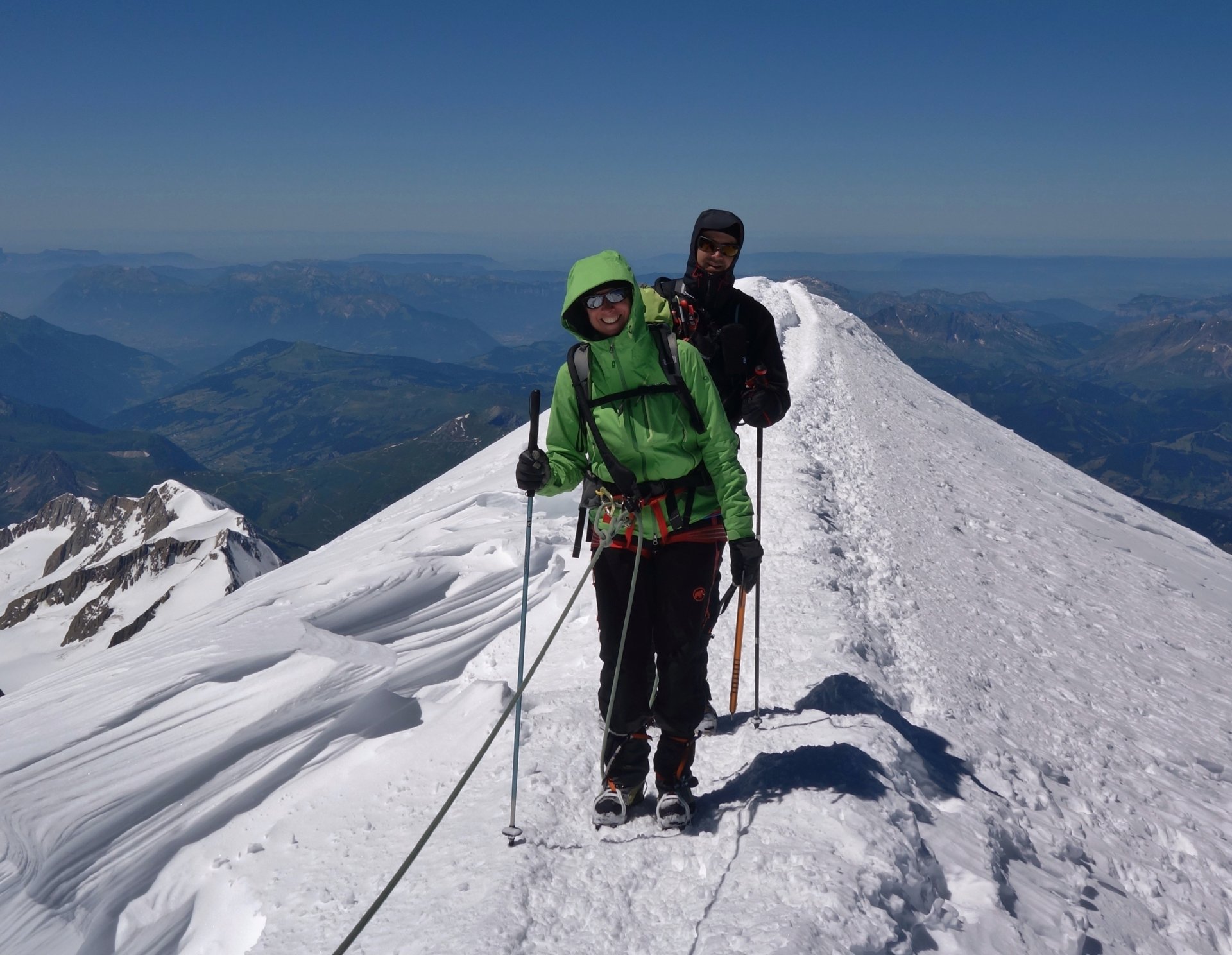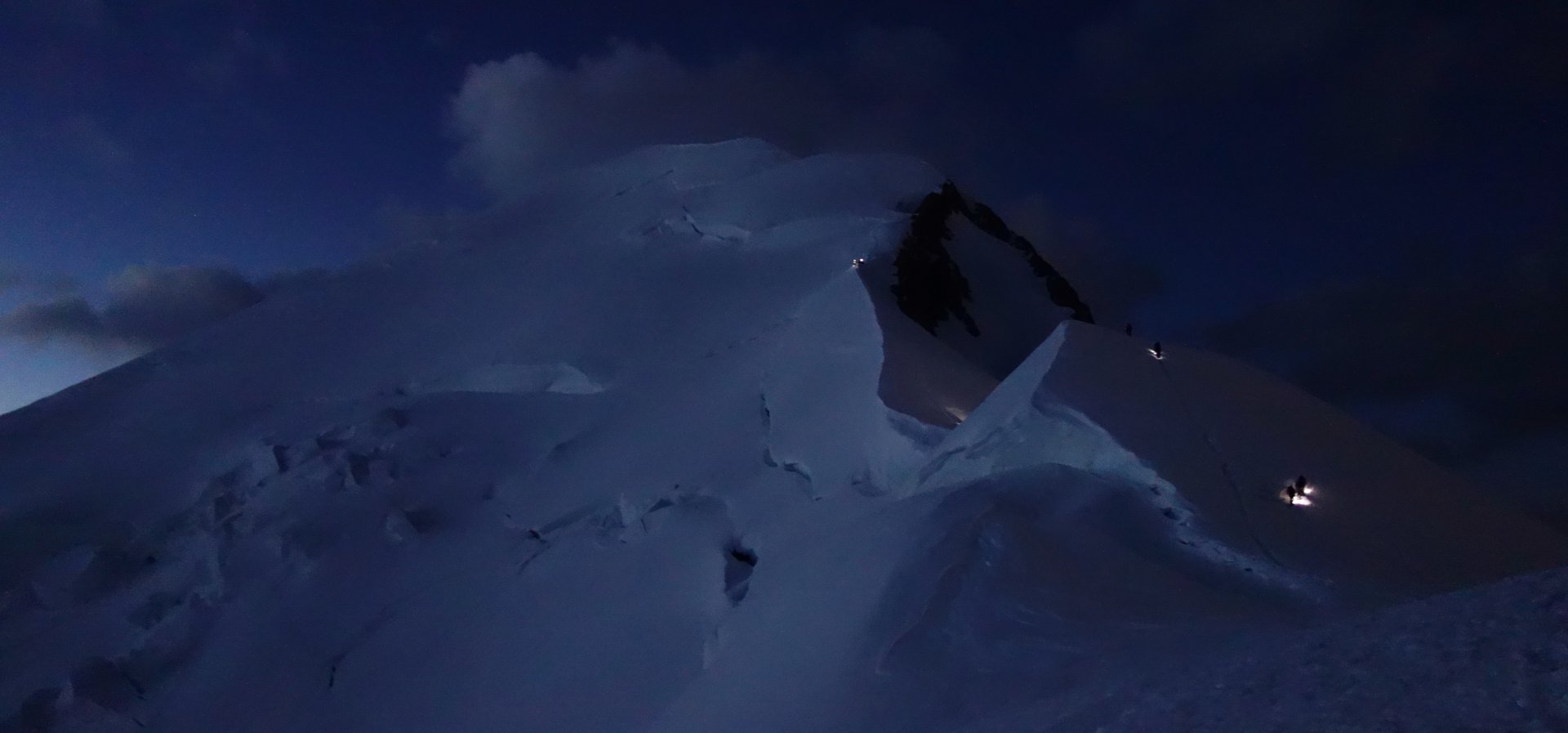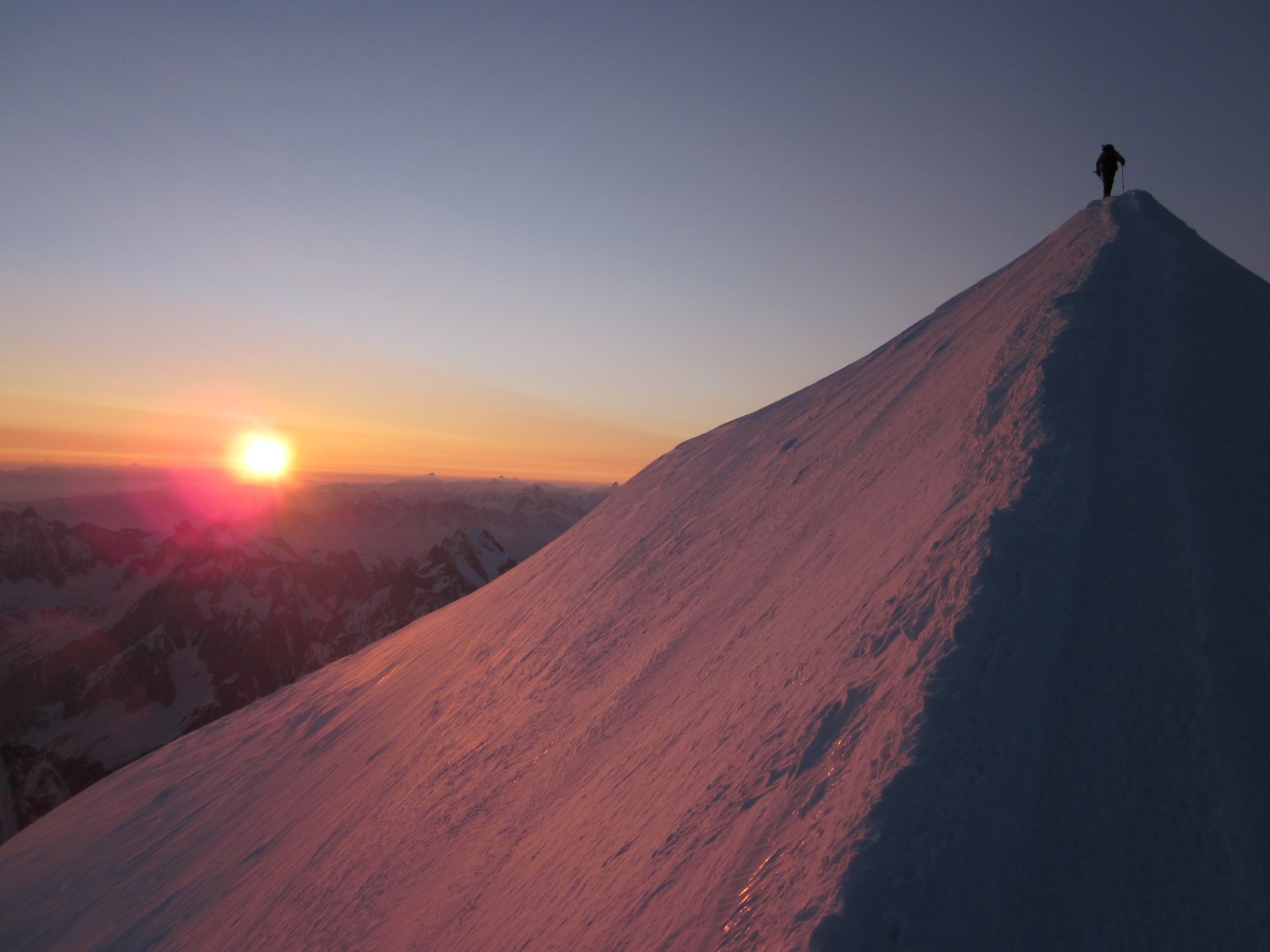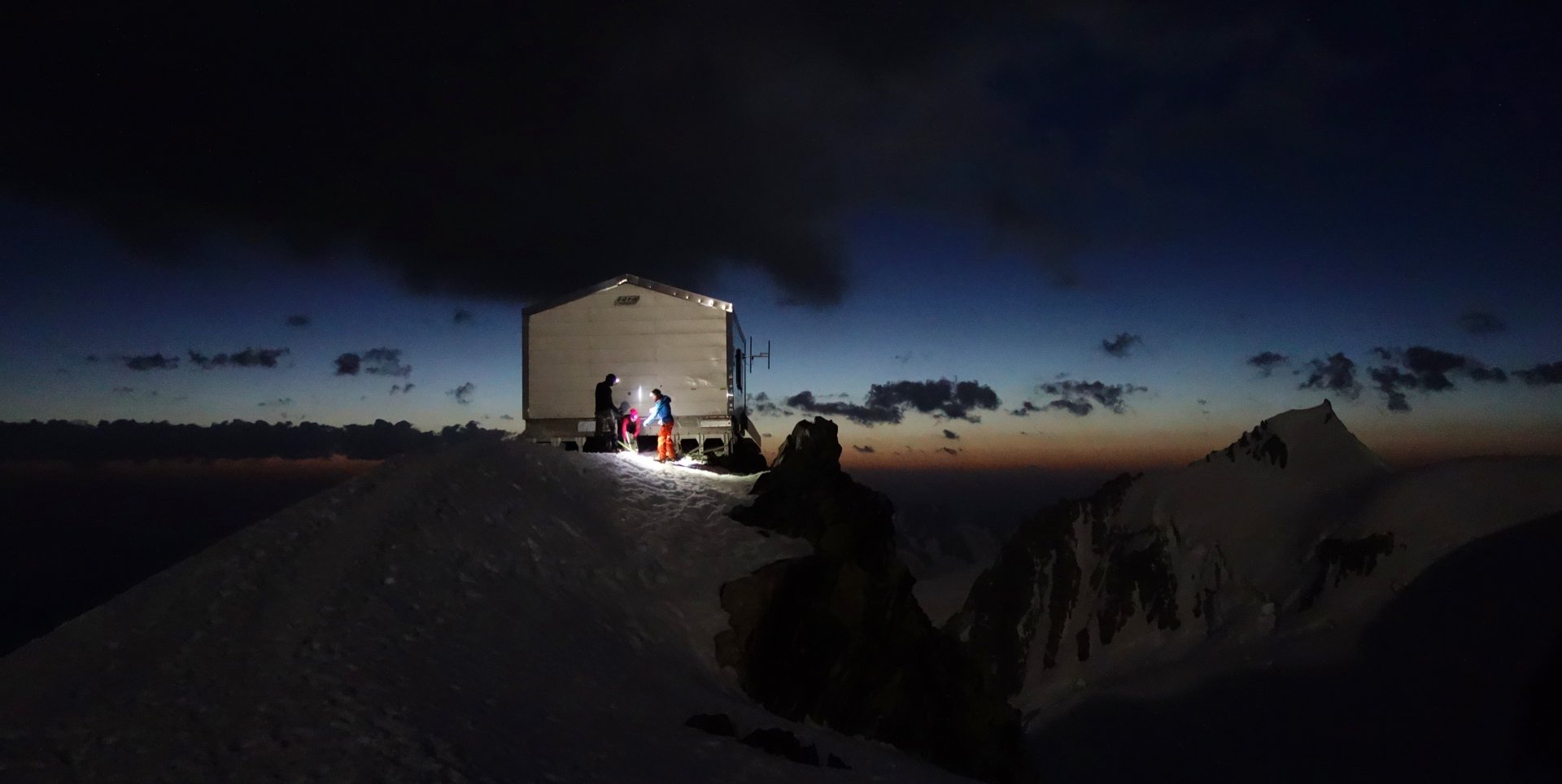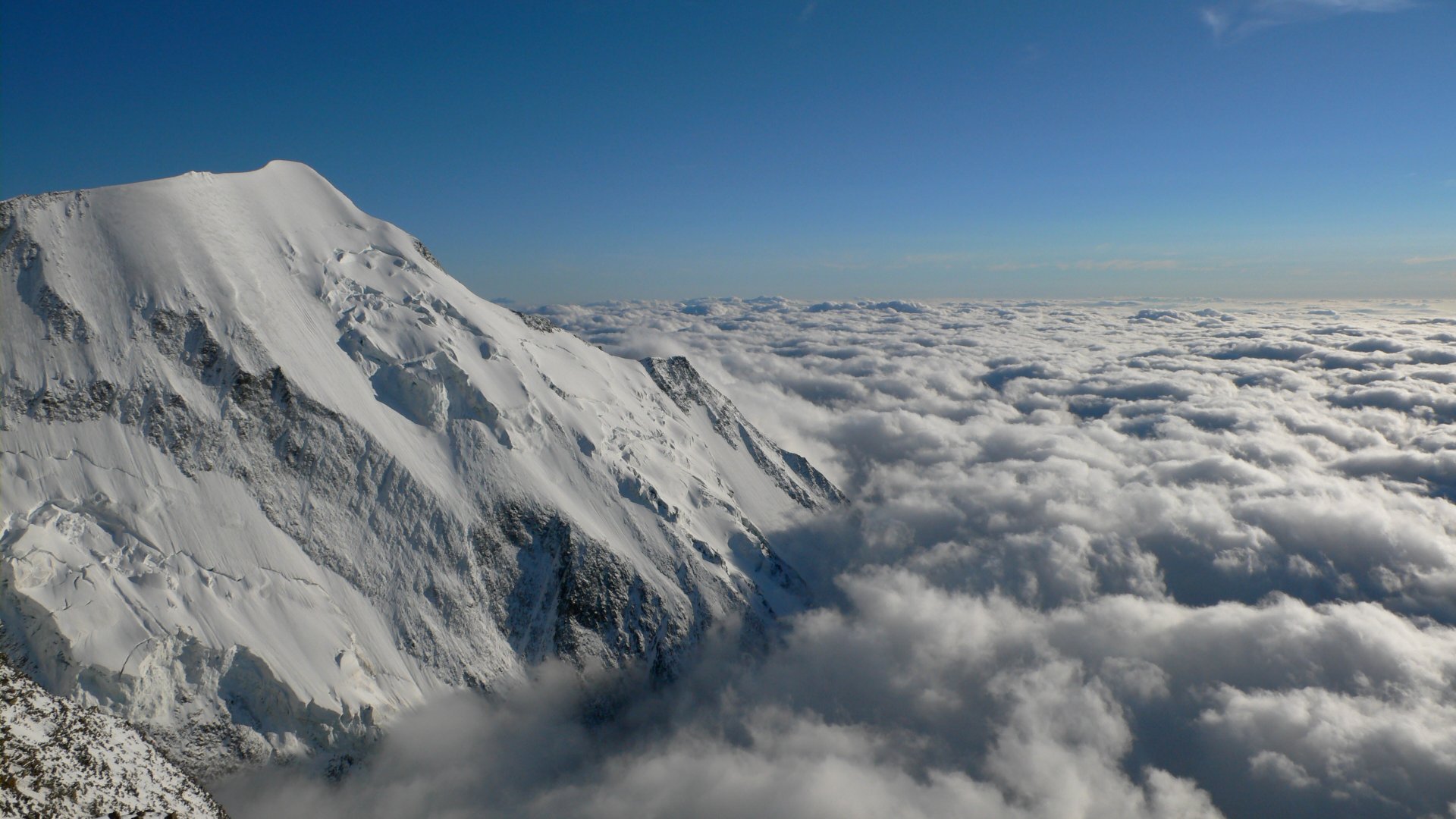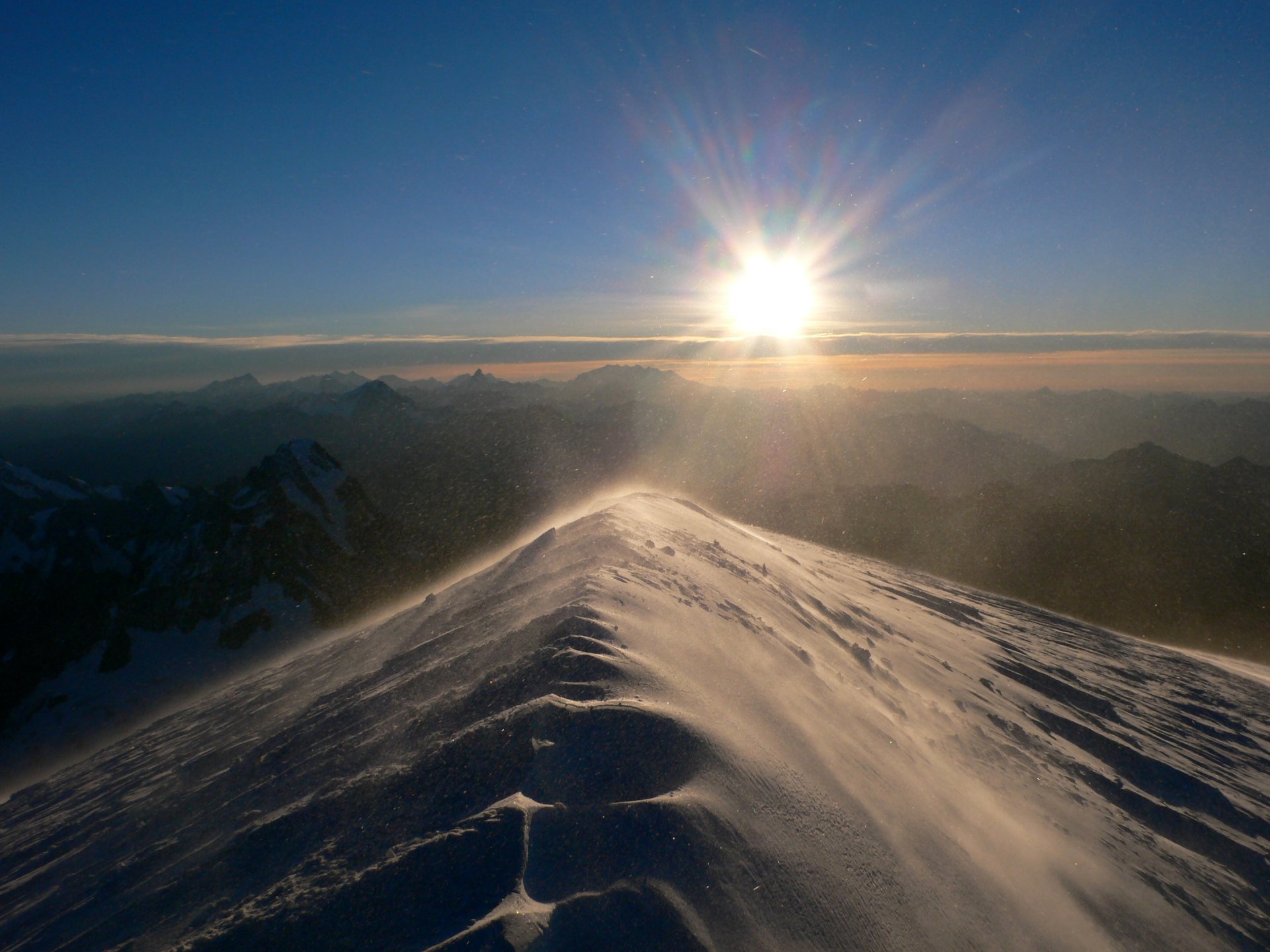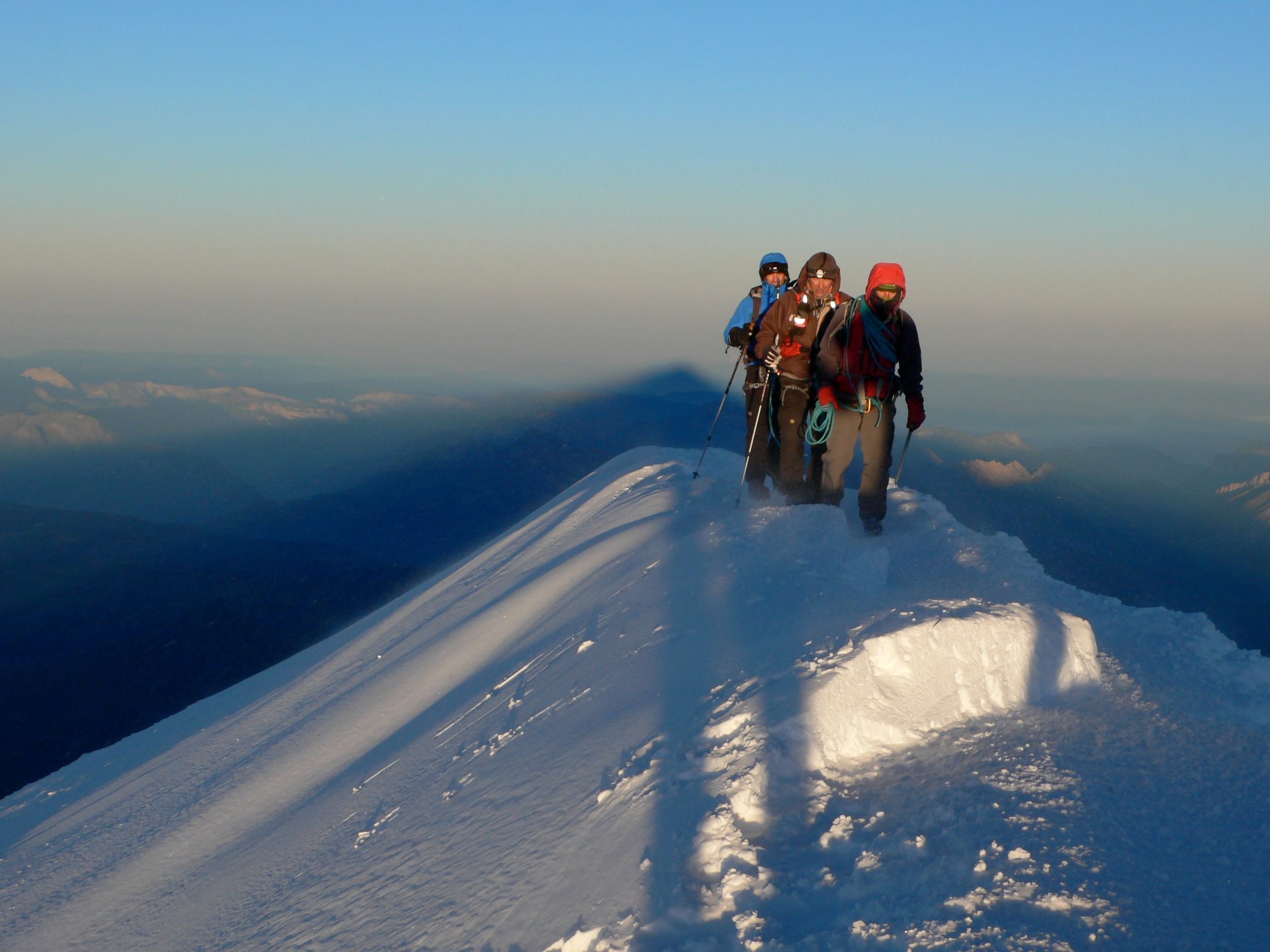Follow us
Contact us
Mont Blanc Duo Package





Physical Level 1: For individuals who engage in occasional physical activities, positive elevation gain of up to 300m.
Physical Level 2: For individuals who engage in regular physical activities, positive elevation gain of up to 600m or routes above 3500m.
Physical Level 3: For individuals who engage in regular endurance activities, positive elevation gain of up to 900m or routes above 4000m.
Physical Level 4: For individuals who engage in regular endurance activities, positive elevation gain of up to 1300m.
Physical Level 5: For individuals who engage in intensive endurance activities, positive elevation gain exceeding 1300m.





Technical Level 1: For regular hikers wishing to discover mountaineering. The route is not very steep and is well-marked, or the activity may also take place in beginner-friendly areas.
Technical Level 2: For experienced hikers wishing to discover mountaineering. The route includes short, steep sections and may involve scree or rocky ridges, requiring surefootedness.
Technical Level 3: For occasional mountaineers (2 to 5 recent outings). The route includes steep sections requiring prior climbing experience at a French grade 3c level and/or mastery of crampons and ice axe use.
Technical Level 4: For regular mountaineers (5 to 10 recent outings). The route requires climbing at a French grade 4c level and mastery of mountaineering techniques, including the use of crampons and an ice axe, as well as basic roping and belaying techniques.
Technical Level 5: For experienced mountaineers (more than 10 recent outings). The route requires climbing above a French grade 4c level and mastery of mountaineering techniques, including the use of crampons and ice axes for ice climbing, as well as advanced roping and belaying techniques.
Mont Blanc Ascent: a true challenge
Climbing Mont Blanc requires excellent physical fitness and solid mountaineering experience. Around 4,600 m, the route now includes a steep section that demands perfect mastery of crampon techniques. For this reason, at least two days of prior mountaineering experience with crampons are mandatory before signing up. Our Beginner mountaineering course, Aiguille du Tour, Vincent Pyramid programmes provide the ideal setting to acquire the necessary skills.
The Compagnie des Guides de Chamonix: unique expertise
Founded in 1821, the Compagnie des Guides de Chamonix has always been closely linked to Mont Blanc and has developed, over generations, a unique expertise in guiding mountaineers to its summit. This 5-day programme includes two days of acclimatisation followed by a three-day ascent. Each rope team consists of one guide for two climbers, ensuring personal attention and tailored guidance throughout the trip.
When is the best time to climb?
There is no such thing as a “perfect period” for Mont Blanc. Conditions vary from year to year. Global warming and frequent heatwaves can lead to excessive temperatures from mid-June to early September. Early in the season, abundant snow can make progress more difficult, while late in the season can bring early-autumn weather. Ultimately, the success of your ascent depends on your flexibility and your ability to adapt to the conditions at the time.
To avoid pairing participants who do not know each other, only pre-established teams of two may register. For groups of three, online booking is not available - please contact us directly.
Dates
See the booking module. The displayed dates always correspond to the first day of the trip
Programme
The programme may be adjusted depending on mountain and weather conditions
⚠️ By registering, you agree to accept an alternative ascent (Plan B) — such as Monte Rosa or Gran Paradiso — if Mont Blanc cannot be attempted
Mountain hut reservations
Mountain huts confirm most of the bookings from February onwards. If there are any difficulties, we will contact you to offer one of the following options: wait for confirmation, choose another ascent or cancel free of charge
⚠️ Please do not call us regarding hut confirmations unless you have received a message from us
2026 price
€2,580 per person, based on two participants
✅ The price includes
- Supervision by a UIAGM mountain guide
- 2 nights half board in mountain huts (dinner, breakfast, and overnight stay): days 3 & 4
- 1 bottle of water per day in the huts (days 3 & 4)
- Tea for the ascent and a meal at the Goûter hut after the climb on day 4
- Lift passes
❌ The price does not include
- Accommodation in the valley (days 1 & 2)
- Lunches and snacks
- Drinks and personal expenses
- Transportation to the meeting point
- Personal technical equipment
Find here all the practical information about this trip. For any additional details, please contact our advisors.
Level
This programme is intended for fit and experienced participants who regularly practise endurance-based activities. Minimum age: 18
⚠️ A minimum of two days of mountaineering experience using crampons is mandatory to register
Beginning of the season
The Mont-Blanc Tramway is generally closed until mid-June. During this period, expect an additional 1.5 hours of ascent on days 3 and 5, making the climb more physically demanding
Physical preparation
Start training several months in advance with 2 to 3 endurance sessions per week. A monthly training plan is sent to you five months before your trip. Key benchmarks:
🏙 Urban training: running and cycling with repeated elevation gain
🎯 Goal: be able to run a half-marathon at your own pace without suffering → See our training tips
🏔 Mountain training: hikes with progressive elevation gain (500 m to 1,000 m)
🎯 Goal: be able to handle 1,500 m of ascent/descent comfortably → See our training tips
Altitude acclimatisation
Acclimatisation allows your body to adapt to altitude and helps reduce side effects (e.g. headaches). Your stay includes two days of acclimatisation followed by three days of ascent
In case of a Plan B
The ascent of Mont Blanc depends on your fitness level, the weather, and mountain conditions. If the ascent cannot be attempted, an alternative climb (Plan B) will be offered
⚠️ Partial refund will apply depending on the services not used (lift, hut, etc.)
⚠️ No refund will be made if Plan B is chosen due to insufficient physical or technical level
Meeting point
On day 1, at 8:30 am at the Compagnie des Guides de Chamonix, 190 place de l’Eglise, Chamonix
Supervision
One guide for every two participants throughout the five days
Accommodation
Two nights in a mountain hut with half board (dinner, breakfast, and overnight stay) on days 3 and 4
Our Rental Partners : You can rent your equipment with our rental shops partners and benefit from special price Sanglard Sports, Ravanel & Co & Concept Pro Shop
Formalities
Rescue and repatriation insurance is mandatory. We offer a combined cancellation and rescue/repatriation insurance when booking
⚠️ A valid ID is required for registration
Documents available for download
We recommend you take particular care over you choice of equipment, as it plays a large role in the success of your trip. Weight is critical, and you must always evaluate the weight-to-comfort ratio to find the best compromise. Weather conditions can be extremely variable: from 20ºC on the approach route to the hut, to -15ºC on the summit (like a cold winter’s day in a ski resort). Generally speaking, it is better to put on several thin layers than to have one bulky item of warm clothing, and it is vital that you remain dry at all times.
Equipment
- 35-litre backpack
- High-altitude mountaineering boots that are not too tight - rentable
- Gaiters, if needed for your trousers
- Telescopic trekking poles - rentable
- Crampons with anti-balling plates; helmet, harness and straight ice axe - rentable
Clothing
- Warm hat that can be worn under a helmet
- Sun hat or cap
- Neck protection such as a ‘Buff’
- ‘Micro-fibre’ style long-sleeve base layer
- Fleece
- ‘Gore Tex’ style shell jacket with hood - rentable
- Down jacket
- Base layer leggings
- Durable summer mountaineering trousers (not ski trousers)
- ‘Gore Tex’ style over-trousers - rentable
- Warm specialist walking socks
- Lightweight specialist walking socks
- Ski gloves or good quality mitts
- Leather or fleece gloves
- Change of clothes at your discretion
Accessories
- Category 4 sunglasses
- Ski goggles
- Headtorch plus spare batteries
- Sheet sleeping bag
- Water bottle (minimum 1.5l) and thermos bottle
- Personalised first aid kit with a minimum of: sun cream, lip balm, cotton buds, blister kit, antisickness medication
- Watertight bag to contain your ID/passport and Euros
Our Rental Partners : You can rent your equipment with our rental shops partners and benefit from special price Millet (excluding crampons, ice axes and helmet), Sanglard Sports, Ravanel & Co & Concept Pro Shop
Our Equipment Partners : Millet, Dynastar, Julbo, Grivel & Monnet
Itinerary
Day route - Acclimatisation
This first day is designed to help you settle in and get to know your guide. Examples of routes include: Traverse of the Aiguilles Crochues (2840m), Traverse of the Pointes Lachenal (3613m). Nights in the Valley.
Day route - Acclimatisation
This second day continues to train your body to adapt to physical effort at altitude. Examples of routes include: Traverse of the Aiguilles Crochues (2840m), Traverse of the Pointes Lachenal (3613m). Nights in the Valley. At the end of this day, your guide will organise a debriefing. Based on your experience he or she may steer you towards a route other than Mont Blanc, if he or she judges that you are not sufficiently ready at that stage.
Walk up to the Tête Rousse hut
We take the Bellevue cable car and Tramway du Mont Blanc to the Nid d’Aigle (2372m), from where we set off in the afternoon. A track leads us to the Tête Rousse Hut (3171m), and takes around 2½ hours, altitude difference: +799m. During the closing period of the Tramway du Mont-Blanc (in general before mid-June), this day is dedicated to the climb to the mountain hut, starting from Bellevue (1796m). 4 hours of effort to reach the hut, altitude difference: +1375m.
Ascent of Mont Blanc with night in Goûter hut
We leave the Tête Rousse hut in the middle of the night at around 4am. The ascent of the Aiguille du Goûter is partially equipped with cables and leads to the Goûter hut (3835m), altitude difference: +664m. This takes around 2½ hours. We stop at the hut to lighten our packs and have something to eat. Our climb now continues via the shoulder of the Dôme du Goûter (4275m), the ‘abri’ Vallot (4362m) and the Arête des Bosseswhich includes a very steep section since 2020. We reach the summit in the middle of the day. From an altitude of 4805.59 m (as measured in 2023) you are afforded exceptional panoramic views. It is now time to start the descent, which follows the same route. The round trip from the Goûter hut takes 6 to 7 hours, altitude difference +-970m.
Descent from the Goûter hut
We leave the hut in the early morning and continue our descent to the Nid d’Aigle, which marks the end of our trip. This takes around 3 or 4 hours of walking. During the closing period of the Tramway du Mont-Blanc (in general before mid-June), the return route goes all the way to Bellevue. 4-5 hours of effort in total.
Booking
Book your activity
Calculate your carbon footprint
Discover the carbon emissions of this activity and add your trip to the meeting point.
CO2 emitted per person for the activity: 88 kg. Learn out more about the footprint calculation of this activity
CO2 emitted per person for the activity: 88 kg. Learn out more about the footprint calculation of this activity
CO2 emitted per person for this activity & journey(s) = 0 kgIn order to limit global warming to +2°C by 2100, the COP-21 agreement stipulates that each human should emit no more than 2t of CO2 per year. According to the French Ministry of Ecology, today European citizens emit an average of 11t per year, and American citizens emit an average of 21t annually., or 8.8€The price for a ton of CO2 is currently 100€ in the European Union to offset.
Find out more about our zero impact strategy.
